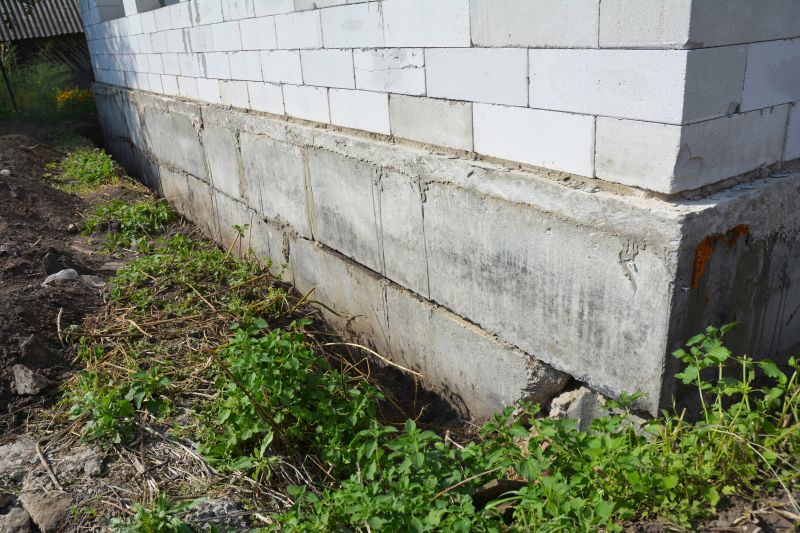Leading Concrete Repair Products for Long-Lasting Fixes
Browse through our selection of high-performance materials and tools designed to provide durable, lasting concrete repairs.
 Concrete repair products are essential for maintaining the integrity and safety of structures, pathways, and surfaces in residential, commercial, and industrial settings. When addressing cracks, spalling, or surface deterioration, selecting the right type of repair material is crucial to ensure durability and longevity. These products come in various formulations, including patching compounds, sealants, adhesives, and coatings, each designed for specific repair needs. Proper application and choice of product can help prevent further damage and extend the lifespan of concrete surfaces.
Concrete repair products are essential for maintaining the integrity and safety of structures, pathways, and surfaces in residential, commercial, and industrial settings. When addressing cracks, spalling, or surface deterioration, selecting the right type of repair material is crucial to ensure durability and longevity. These products come in various formulations, including patching compounds, sealants, adhesives, and coatings, each designed for specific repair needs. Proper application and choice of product can help prevent further damage and extend the lifespan of concrete surfaces.
Top Overall Option
Multi-Purpose Concrete Repair Compound
A versatile and user-friendly repair compound suitable for a wide range of concrete restoration needs. It offers good adhesion, durability, and ease of application, making it a reliable choice for both small patches and larger repairs. Its formulation allows for smooth finishing and effective bonding to existing concrete surfaces, helping to restore structural integrity and appearance.
Types of Products For Concrete Repairs
Concrete Patch and Repair Mix
Pre-mixed or powder formulations designed for filling cracks, holes, and surface imperfections.
Epoxy Injection Kits
High-strength epoxy solutions used for structural crack repairs and bonding broken concrete sections.
Polymer-Modified Mortars
Enhanced mortars that improve adhesion and flexibility for larger or deeper repairs.
Concrete Sealants
Flexible sealants that waterproof and protect surfaces from moisture and weathering.
Hydraulic Cement
Fast-setting cement used for emergency repairs and sealing active leaks.
Surface Coatings and Overlays
Protective layers that improve appearance and add a barrier against future damage.
Crack Fillers and Sealants
Materials designed specifically to fill and seal minor cracks and joints.
Self-Leveling Underlayments
Materials used to create smooth, level surfaces before further finishing.
Fiber Reinforced Repair Products
Add fibers for increased tensile strength and crack resistance in repair mixes.
Bonding Agents
Primers that enhance adhesion between old and new concrete layers.
Patch Repair Mortars
Heavy-duty mortars designed for filling large voids and restoring structural elements.
Waterproofing Membranes
Flexible membranes applied over repaired areas to prevent water ingress.
Popular Choices
Convenient for quick repairs of surface cracks and small holes, suitable for various concrete surfaces.
Commonly used for sealing structural cracks and providing durable bonds in concrete repairs.
Popular for restoring larger areas with enhanced flexibility and adhesion.
Frequently chosen for protecting surfaces from water penetration and weathering.
Ideal for emergency repairs and sealing active leaks quickly.
Used for creating smooth, even surfaces before finishing or coating.
Effective for minor cracks and joints, providing flexibility and waterproofing.
Enhances adhesion between existing and new concrete layers.
Popular for adding strength and crack resistance in repair projects.
Commonly used over repaired areas to prevent water ingress and damage.
Understanding the different types of concrete repair products can help users make informed decisions. For minor surface cracks or small holes, ready-to-use patching compounds and fillers are often sufficient. For larger cracks or structural repairs, more robust solutions like epoxy injections or polymer-modified mortars may be necessary. Sealants and coatings are also popular for waterproofing and protecting repaired areas from future damage. It is important to consider the specific conditions of the repair site, such as exposure to weather, load-bearing requirements, and the type of concrete involved.
Proper surface preparation is vital for optimal adhesion and performance of concrete repair products. Cleaning the area thoroughly to remove dirt, loose debris, and any deteriorated material ensures that the repair material bonds effectively. Following manufacturer instructions regarding mixing, curing times, and application techniques can significantly influence the success of the repair. Regular maintenance and timely repairs can help preserve the structural integrity and appearance of concrete surfaces over time.
Whether addressing small cracks or large structural issues, selecting the appropriate concrete repair products tailored to the specific problem is essential. Consulting with professionals or local suppliers can provide additional guidance tailored to local conditions in Pasco, WA. With the right products and proper application, property owners and contractors can effectively restore concrete surfaces and prevent future deterioration.
Key Buying Considerations
- Identify the specific type of damage or deterioration to select the appropriate product.
- Consider whether the repair is structural or surface-level to choose the right strength and formulation.
- Check compatibility with existing concrete surfaces for optimal adhesion.
- Evaluate exposure conditions such as weather, moisture, and load demands.
- Determine the size and depth of the repair area to select suitable product volume and consistency.
- Review curing time requirements to plan project timelines accordingly.
- Assess ease of application, especially for DIY projects, including mixing and finishing requirements.
- Look for products with good adhesion properties to ensure long-lasting repairs.
- Consider whether waterproofing or protective coatings are needed for added durability.
- Verify if the product is suitable for interior, exterior, or both applications.
- Examine the product’s flexibility and crack-bridging capabilities for areas prone to movement.
- Check for compatibility with other repair materials or coatings planned for the project.
- Review manufacturer instructions and safety data sheets for proper handling and application.
- Consider environmental conditions in Pasco, WA, that might affect product performance.
- Estimate the amount of product needed to avoid shortages or excess waste.
